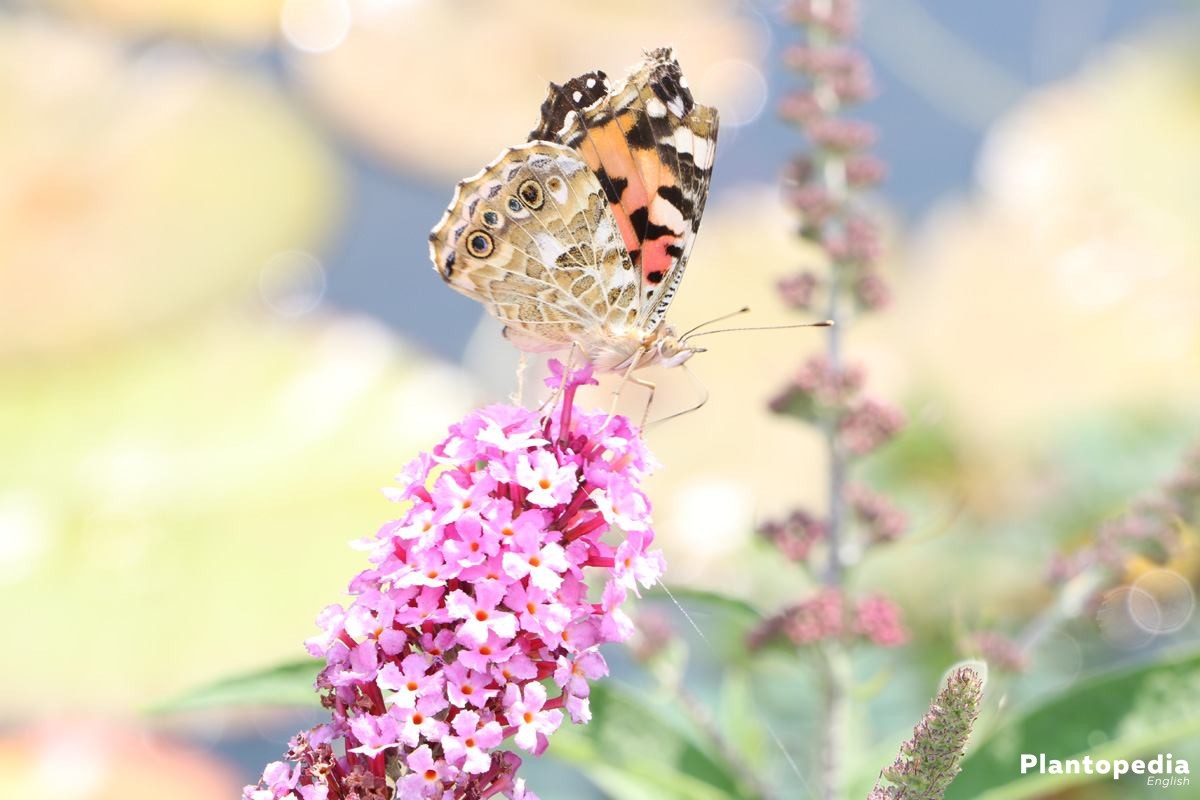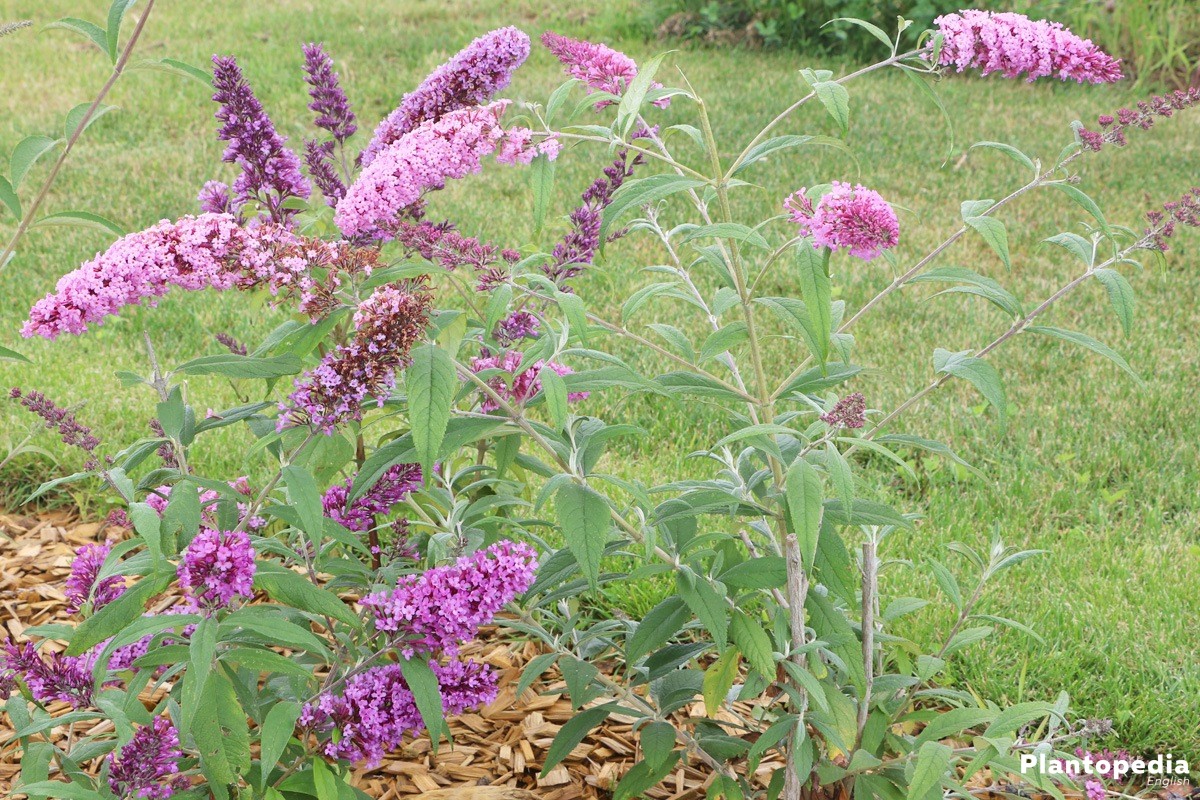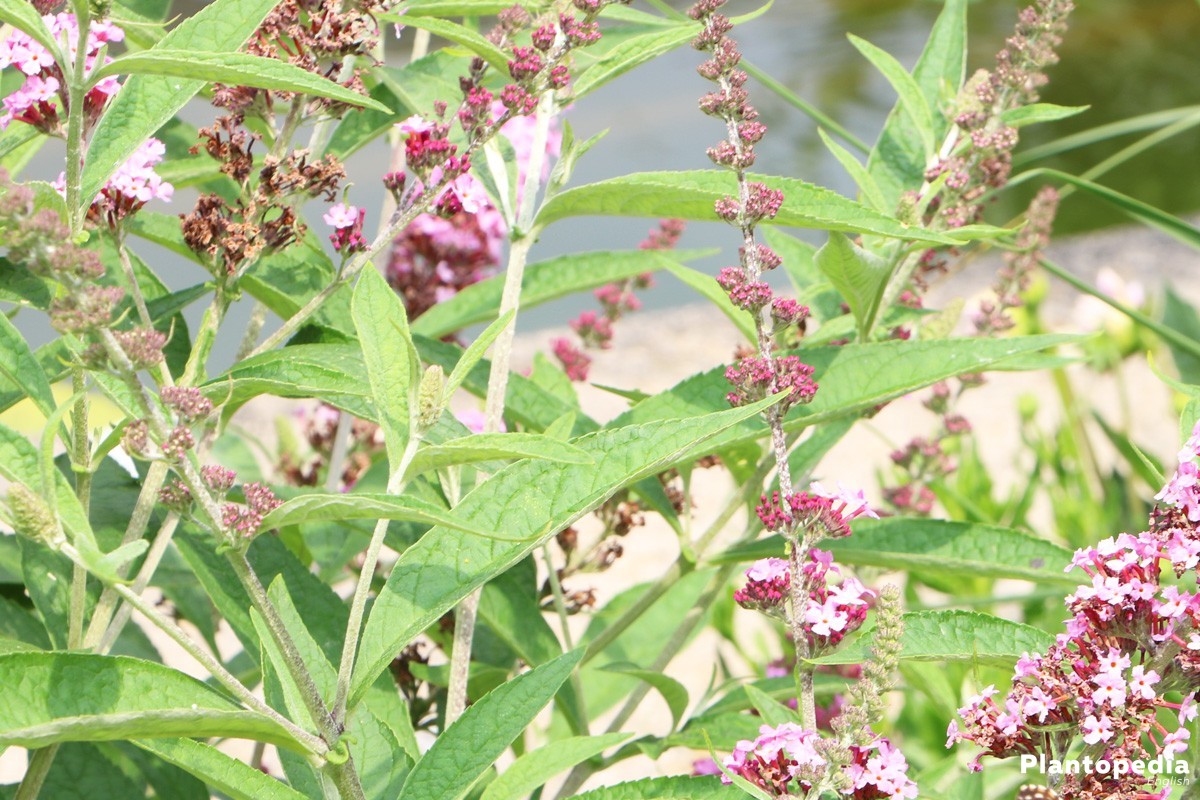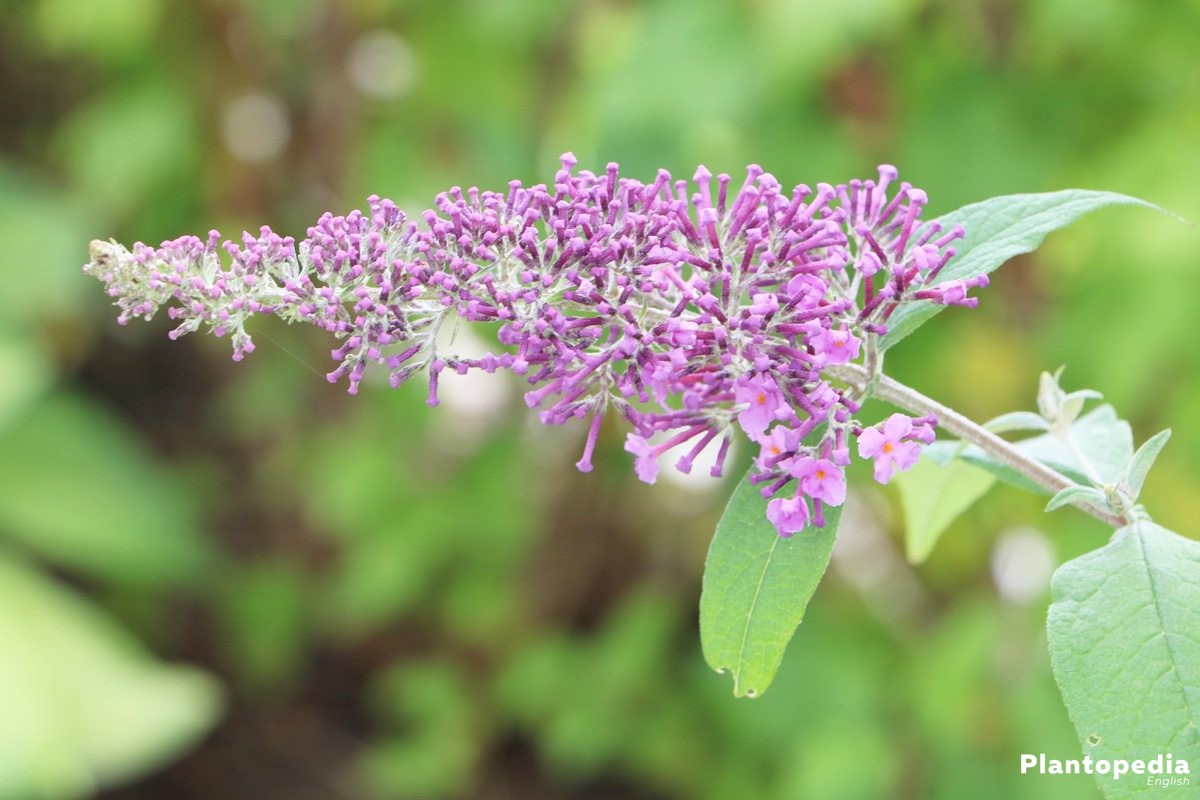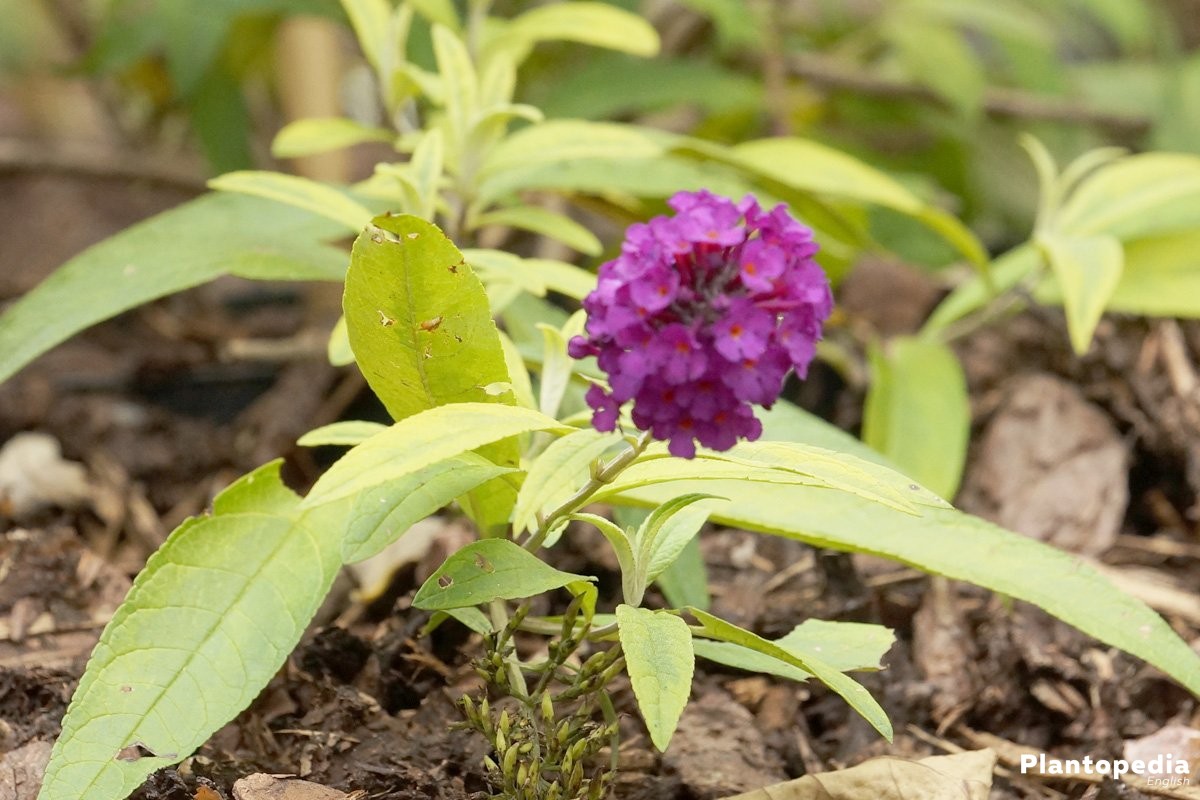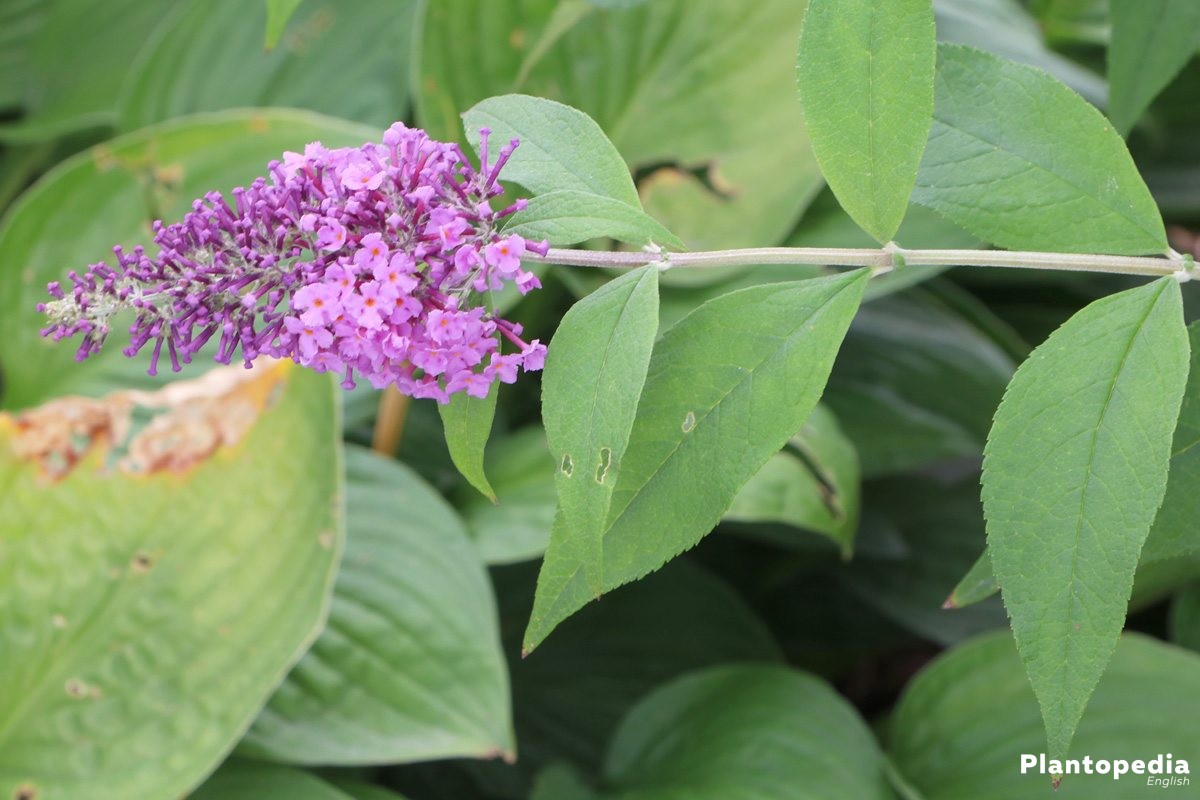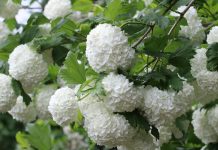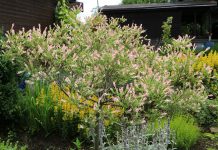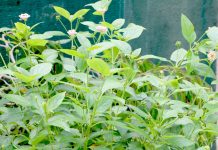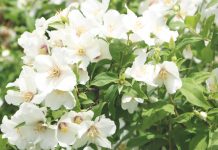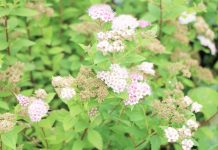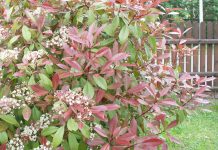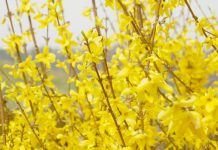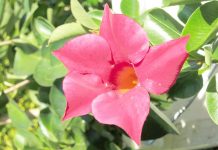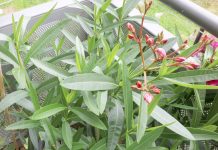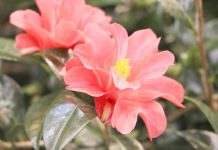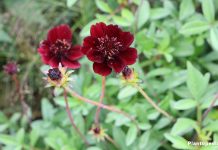While the flowering period for ornamental shrubs is at a near end or has already ended, this beautiful and heavy-growth blossom grove is riddled with panicles. From July until autumn, the butterfly bush brings its white, yellow, rose colored, violet or blue colors to show, which attract a multitude of not less ravishing butterflies into the garden, which are a beauty to look at.
Plant Profile
Contents
- Species: Butterfly bush
- Family: Scrophulariaceae
- Origin: Tropical and sub tropical areas in America, Africa and Asia
- Growth: Shrub formed, slightly overhanging as a tree or vine
- Growth height: Depending on the variety 200 to 500 cm
- Foliage: Throwing off foliage, long serrated, matte green
- Flowering period: Davidii May/June, alternifolia June until September/October
- Blossom: Grape like inflorescence, up to 30 cm long and 2 – 5 cm wide
- Color of the blossoms: White, yellow, rose colored, crimson, bright or dark violet
- Application: Solitary, blossom hedge or undergrowth
Butterfly Bush, Buddleja is a thankful summer bloomer, which grows as a shrub or half shrub, rarely as a tree or vine. It strongly resembles the lilac, which already blooms in May. Both emit an irresistible scent. The butterfly bush can reach growth heights of up to 500 cm and grow 300 cm onto the sides, due to branching.
The most popular variety is the Buddleja davidii, whereas the alternate butterfly bush Buddleja alternifolia is also worth being mentioned, which takes a special position concerning the yearly cut.
Butterfly bushes are not to be confused with the spring growing lilacs, which belongs to a wholly different species. The two varieties Buddleja davidii and the narrow leafed Buddleja alternifolia, which mostly occur in domestic gardens, are different in their behavior regarding growth and blossoms.
While davidii carries blossoms until autumn, the small leafed variety grows from the end of May until the end of June. Compared to davidii, which blooms on this year’s shoots, the blooms on this variety appear on the previous year’s shoots, which is especially important concerning the cut. Furthermore, the Buddleja alternifolia grows more lavish but only in early summer. It grows thicker and cascade formed than the Buddleja davidii.
Care
When considering a purchase, one should preferably choose already blooming specimens with possibly several shoots, this way you can be sure regarding the color. Plants with weak shoots with naked roots are not to be recommended. Other than that, the requirements are relatively low. One still has to keep an eye out for some issues regarding the cut.
Location
The butterfly bush loves warm and sunny locations and tolerates half shady spots, narrow leafed butterfly bushes are ideally placed into a solitary position. He is also being great in combination with roses or shrubs with a suitable color. The Buddleja davidii on the other hand can well share its spot with other grove vines. In order to conceal bald in the lower area of the butterfly bush, a planting with flowering plants like asters, cosmeen or mathiolas can be worth it.
Soil
- Butterfly bushes thrive on different soils
- it still prefers loosened, permeable soils with added compost
- not recommended are constantly moist, heavy soils
- heavy clay soils can be made permeable with gravel or sand
- peat, high quality potting soil or compost can improve the storage capacity of sandy soils
- substrates which are too high quality encourage primarily the growth of shoots and leafs
- in this case, blossom growth will be significantly slower
One should keep an eye on loose, permeable substrate with a culture in a bucket as well. Bucket potting soil is usually well suited. If ordinary balcony potting soil is used, it should be emaciated by adding equal parts of coarse sand in order to make it permeable. Next to sand, grit foamed clay can also be used.
Planting
Planting in the garden
The ideal planting time of the butterfly bush is in spring and summer, whereas a planting in autumn is permissible if an appropriate winter protection is used. The root bale should be meticulously watered in front of the planting. In the meantime, a 60×60 cm broad and deep planting hole should be dug. The soil in the planting hole should be carefully loosened. For ideal starting conditions, the dug up earth should be mixed with an abundant amount of compost.
At this point, the plants can be placed inside and the hole can be filled with earth. They should be lying as deep in the earth as previously inside the earth. The earth should be pressed on and watered. In order for the irrigation water to stay where it is needed, the construction of a pouring edge is recommended. A layer of mulch on the root area shelters the ground from drying out. A distance of approximately 150 cm to other plants or groves is recommended.
Bucket planting
The butterfly bush is a great choice for being kept inside of a bucket due to its low maintenance nature and its longer flowering period. Buddleja alternafolia is, because of its wide and strongly overhanging growth, not really suited for that. The more compact variety Buddleja davidii which is of a small nature is better suited.
A small variety, which is literally predestined for being kept in a bucket is the Buddleja davidii ‘Nanhoensis’. Classical garden varieties should, if possible, not be planted in a bucket. The reason for this is a deep root structure, which requires big planters.
Important, regarding panting in a bucket is a sufficiently big planting bucket with a diameter and a height of at least 40 cm and drain holes. Also, a good drainage on the bottom of the pot is important. A piece of the substrate is being placed on the drainage, onto the substrate one can subsequently plant the butterfly bush. Afterward, the pot should be filled with earth until 2 cm below the top. The earth should be tightened and abundantly watered.
Watering
- young or freshly planted plants should be watered regularly at the beginning
- the soil should nevertheless be too wet
- older plants should only be watered during a long dry period
- bucket plants have to be watered more often, the substrate dries out faster
- water logging should also be prevented with bucket plants
- preferably use water rich in lime when watering
Fertilizing
If compost has been added during the planting, fertilizing should ordinarily not be necessary. Merely with the back cut it is recommended to add compost in order to encourage the growth of new shoots. Later, one should add in a 14 day frequency a bucket plant or balcony potting soil, substrate leaches out faster and stronger in a bucket than it does in a garden.
The fertilizer should not contain a lot of nitrogen, however a sufficient amount of phosphor. This should be administered preferably with the irrigation water. One should water before fertilizing so that the fertilizer does not harm the roots.
Cutting
Buddleja davidii blooms like nearly all summer blooming groves on this year’s wood, which simplifies the cut. The ideal time for a back cut is a frost free and not too sunny day in late winter, until the middle of February at the latest. The back cut can occur in April as an emergency, might procrastinate the blossom though.
The later one cuts, the later the flowering commences. A regular cut at the right time and with the right intensity improves the amount of blossoms, the shoots drives out more strongly and grows a lot of new shoots with big panicles.
- if no strong frost is feared, cut back withered shoots
- too thick placed competing shoots should be removed on the base with shears
- a back cut on branch ring prevents, that the branch drives out at this spot for a second time
- all flower shoots from the previous year should be severely cut back
- in this regard, cut above two opposing leaf bases
- new shoot buds will form which drive out in spring and bloom in summer
- remover very thin branches and one year shoots, which impede others or are crossing
- after the back cut, a basic structure remains
- the new shoot on the sleeping eyes is costing the plant a lot of strength
- consequently, the flowering period commences later than usual
- that is why the back cut should be done by the middle of February
- until summer, the lilac will be head high and carries a multitude of colorful panicles
Withered panicles should be removed consistently in a bucket as well. If one cuts the latest until the end of July/August, the butterfly bush will keep driving out blossoms. In late winter, when the strong frosting period is over, the compactly growing bucket plants care being strongly cut back, possibly near the ground. Two leaf buds per shoot should remain from the old shoots. They will strongly shoot and will show the first blossoms in July.
Buddleja alternifolia
Compared to Buddleja davidii, the alternate butterfly bush grows its blossoms in the leaf axils of the previous year’s shoots. In the case of a back cut in spring, the blossom buds would be removed as well and a flowering would fail to occur as a result. Because of this, this variety should only be cut to a small extend or not at all. Only when it has become too thick or the blossom is decreasing one can lighten it after flowering.
It tolerates, if necessary, a stronger back cut into the old wood, e.g. to rejuvenate it. By doing this, one can not expect blossoms in the next year. With thick hedges, new shoots sticking out can be shortened between March and September. One should however observe breeding seasons.
Hibernation
Young butterfly bush planted in a garden is only moderately winter hardy and requires a suitable winter protection. The winter hardiness might depend on the variety. By placing a layer on to the root area of straw and brushwood, one can sufficiently shelter the plant during winter months.
Older specimens are mostly winter hardy and do not require winter protection. It can nevertheless occur, that one or two shrubs might partially or fully freeze back. They will shoot out again in spring though. An additionally protection can be made available by low, ground covering undergrowth. The butterfly bush in a bucket can be placed outside with no problems if it is placed in a dry and wind sheltered position. Ideal is a spot which is not exposed to the sun and wind in front of a house wall or under a roof.
Doing this, the plant bucket should be placed away from the ground and on Styrofoam or a wooden pallet. Afterward, wrap the pot with jute, bubble wrap or fleece, or you place it in a wooden box and fill the gaps with dry foliage, straw or bark mulch. Well packaged and with enough water, the butterfly bush can survive the winter in a bucket.
Multiplication
Regarding multiplication one should know, that the butterfly bush is a so called invasive neophyte. These are plants, which spread in areas where they have not originally been home, like the butterfly bush. It can strongly spread and thus impede the growth of other plants. To prevent this, it is recommended to constantly remove old inflorescence, before the seeds could fall out. Aside from self seeding, the butterfly bush can just as well be multiplied with cuttings or layers.
Cuttings
- cut 15-20 cm long, blossom less shoot tips between June and the middle of August
- shoot tips are being cut by one year shoots
- except the upper 2 – 3 leaves, all of them are being removed
- halve the remaining, to keep dissipation as low as possible
- subsequently plant the cuttings in small pots
- use a mixture of two thirds multiplication soil and one third sand
- moisten the substrate and cover the cuttings with a light permeable plastic bag
- the foil can not touch the leafs of cutting, if it does they could rot
- remove the foil daily for a short period of time in order to avoid the growth of mold and rotting
- rooting in a water glass is also possible
- if roots have grown, the cuttings are being planted
Layers
In order to layer, one selects a not too wooden shoot in late summer and carefully bends it to the ground. The part of the shoot, which is lying on the ground, is being slightly cut with a knife on a length of approximately 15 cm, in order to encourage root growth.
This exact part is being covered with soil afterward and the branch should be fixated with bent wires, pegs or anything similar in the ground. From now on, the earth should be kept slightly moist. Until next spring, roots will have grown, the seedling can be separated from the mother plant and be placed at its eventual location.
Diseases
Narrow leafs
The so called narrow leafs are being caused by viruses and shows with crinkled leafs with yellow like mosaic drawings on them. An over fertilizing with nitrogen is often the cause. The only remedy for the most part is to completely remove the plant. A nitrogen based fertilizing should be, as a preventative measure, be avoided.
Parasites
Leaf bugs
An infestation with leaf bugs shows among others with brown yellow suck spots of the bugs on the leafs, which subsequently die. Another indicator are malformed blossoms or shoot tips. To fight this, this torpor parasite can be shaken onto an underlay in the early morning. Affected plants should be sprayed on with a soft soap solution or other suitable compounds from a specialist store.
Nematodes
Nematodes (Thread worms) are being mostly known as beneficial insects. They can, however, damage the plant tissue. Yellow spots show on the leafs, which are later coloring brown, leafs will eventually fall down. A fertilizing with too much nitrogen might be the cause here as well. Affected plants are often beyond saving and must be destroyed. One should keep an eye on good soil conditions and on the nitrogen levels in the fertilizer, as a preventative measure.


